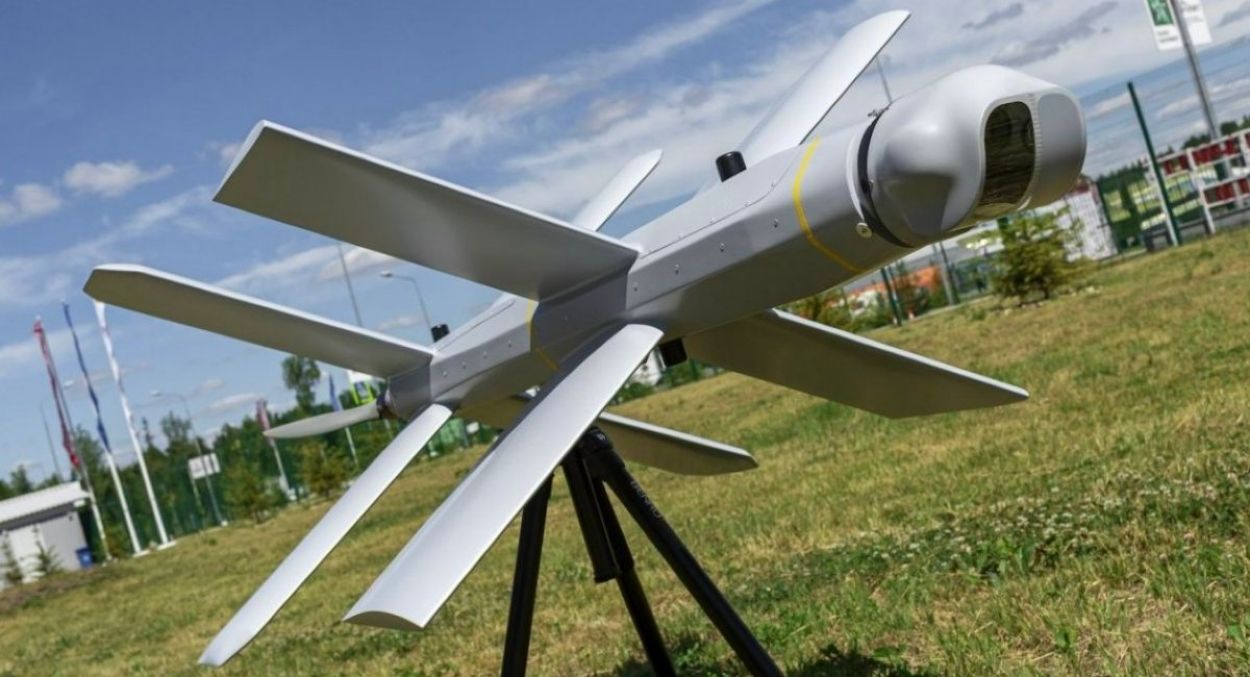A video has emerged on social media showing a Russian Lancet-3 kamikaze drone hitting a parked Ukrainian Air Force (UAF) MiG-29 at an air base in south-central Ukraine in what could be a rare strike in the war.
The Lancet loitering munition has emerged as the most defining weapon of the war, with several dozen videos showing it destroying Ukraine’s Soviet-origin artillery and European and US howitzers like the M777, Paladin, and self-propelled guns like the Polish KRAB. It has even destroyed several air defense radars and surface-to-air missiles (SAM) like the S-300.
Russia introduced the Lancet series of Unmanned Aerial Vehicles (UAV) following the tactical withdrawal from Kherson in November last year after Ukraine had begun targetting its long and vulnerable supply lines that fed its gun and tube rocket artillery. Russia revealed it destroyed 45 percent of towed and self-propelled artillery since the beginning of the war in February 2022.
While it has reintroduced its artillery as per the evolving battlefield situation while using tanks like the T-80BVM for indirect fire support roles, Lancets have not entirely disappeared and still figure in Russian Ministry of Defense (RuMoD) publicity material. They are used against lightly armored Ukrainian tactical vehicles, artillery, built-up structures housing ground troops, lightly fortified bunkers, and communication towers.
#Ukraine: A Ukrainian MiG-29 fighter aircraft was damaged by a Russian Lancet loitering munition at the airfield of Kryvyi Rih.
The closest Russian positions are located more than 65 kilometers away. pic.twitter.com/2plF7i6aMH
— 🇺🇦 Ukraine Weapons Tracker (@UAWeapons) September 19, 2023
Lancet Destroys Parked MiG-29
A report in Forbes said an explosives-laden Russian drone struck and damaged an Air Force Mikoyan MiG-29 fighter on the tarmac at Dolgintsevo air base near Kryvyi Rih on or before September 19. “Despite claims to the contrary from some observers, there’s little reason to believe footage of the attack is fake,” the report said.
While sharing a video on its account, Ukraine Weapons Tracker, a popular handle on X (formerly Twitter), said that the “closest Russian positions are 65 kilometers away.” The information accompanying the video said the strike occurred at the airfield in Krivoy Rog (Kryvyi Rih) in the Dnepropetrovsk region.
A strike this deep inside Ukrainian territory undertaken by a drone (Lancet-3) with a range of 40 kilometers implies a new drone version has been employed in the strike.
RIA Novosti reported in March about ZALA, the Lancet developer, introducing an upgraded drone version, drawing from the experience in Ukraine. “The drone received a new optical-electronic guidance system and control system with new software and improved controllability,” the report said. A new “more powerful” warhead has been introduced to destroy heavier ground systems like tanks and armored fighting vehicles. It did not, however, mention an extended-range version.
Subsequent reports and RuMoD press releases said the drone’s production is increasing, with senior figures like Defense Minister Sergei Shoigu and Deputy Prime Minister Dimitry Medvedev visiting such factories.
According to another report, ZALA Aero called this advanced variant the Izdeliye 53 (Product 53), which can be remotely fired from a Multiple-Launch System, such as a quad-packed 4×4 launcher, and capable of communicating with other drones, enabling a coordinated ‘drone swarm’ attack. This version may have the extended range that could have been used in the strike at Kryvyi Rih.

However, the version of the Lancet and whether it possessed a longer reach is just a conjecture and could not be verified. Leading Russian Telegram channels, however, claimed this was the “modernized Lancet.”
“Scouts from the Dnepr group of troops hit the so-called MiG-29. Air Forces of the Air Force at the Kryvyi Rih airfield Dolgintsevo. Loitering ammunition with improved characteristics is in operation (sic),” said a message accompanying the video on the Telegram channel of Dnepro_Rub.
This means it was regular Russian army units that carried out the strike. The video briefly showed footage from the nose CCD camera of the Lancet approaching the parked MiG-29 from an angle. An overhead drone then captures the rest of the strike, where the UAV impacts the front right side of the aircraft, beside the nose and the cockpit area.
It only results in a light explosion with shrapnel expelled around the parking bay. This damage is sufficient to render a lightweight platform like an aircraft inoperable. There are two other MiG-29s in the parking bays to the left and opposite the target aircraft.
When filing this report, the RuMoD did not officially release the video and the information on its social media handles.
Impact on Ukraine’s Battlefield Planning
The strike can be said to have had a semi-strategic impact on the war, with the UAF likely moving its MiG-29s away from the Kryvyi Rih air base and possibly more profound into central and Western Ukraine, now that they are within reach of Russian long-range loitering munitions.
Placing S-300, Buk, or French-Italian SAMP/T SAM systems to protect such bases is even riskier, as these drones can target them. UAF also uses the MiG-29s for firing the AGM-88 High Anti-Radiation Missile (HARM), used to destroy radars of SAM systems. Repositioning these MiG-29s entails complicated workarounds to continue their operations, maintenance, and logistics infrastructure.
- The author can be reached at satamp@gmail.com
- Follow EurAsian Times on Google News




